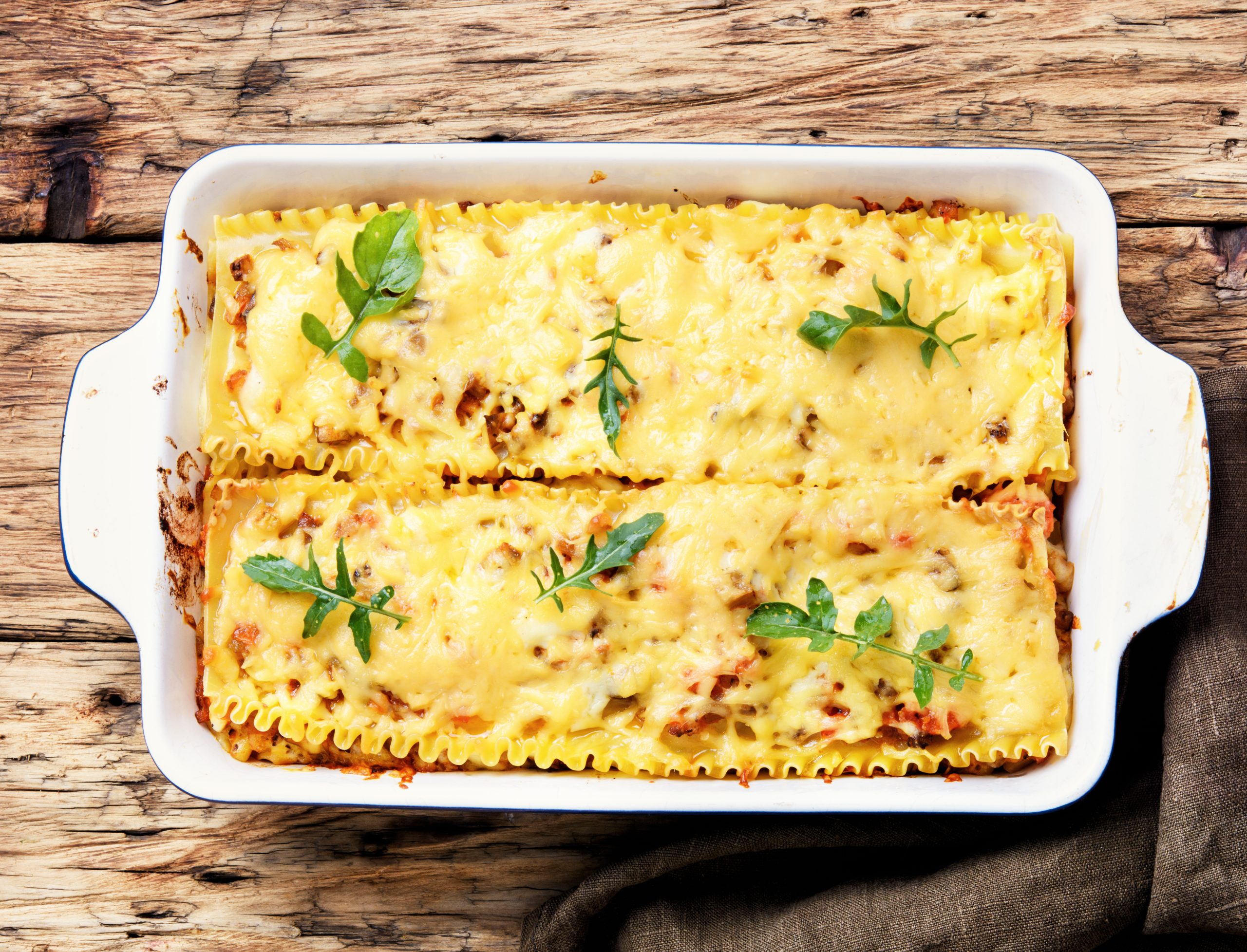Lasagne sheets
Combine flours and salt. Add eggs, water and oil to mix and work for 15 minutes.
Rest the dough before using.
Laminate the dough by passing through the rollers of a pasta machine to the required thickness (approx 1mm), cut sheets to the required length and width.
Bechamel sauce
Put the milk, onion bay leaf and clove in a saucepan. Warm over a moderate heat until simmering. Remove from the heat and rest for 15 minutes to allow the flavours to infuse.
Melt the butter in heavy saucepan, then add the flour and stir with a wooden spoon until the mixture forms a smooth paste (a roux). Cook stirring continuously, for 2-3 minutes, taking care not to colour the roux.
Strain the milk (discard the other ingredients) and stir into the roux. Bring to a boil, beating vigorously to avoid lumps. Season with salt, pepper and nutmeg and simmer very gently for 10 minutes.
Sugo Bolognese
Heat the olive oil in a large pot and saute; the onion and garlic over medium heat for 4-5 minutes until soft and golden.
Add the meat and saute; for 10 minutes, stirring continuously, until well browned. Stir in the herbs and spices and season with salt and pepper. Add the tomato paste and cook for 1-2 minutes, then pour in the wine and boil to reduce by half.
Add the beef stock and mix well. Bring to the boil, then reduce the heat and simmer gently for 1 hour.
When the sugo Bolognese is ready, cook the lasagne sheets in boiling salted water until al dente. Drain and put into a bowl of cool water with a few drops of olive oil to prevent the sheets from sticking together.
Pre-heat oven to 180C. Ladle a small amount of both sauces into an oven proof tray. Cover with a layer of pasta. Ladle some more sugo over the pasta and drizzle over some bechamel sauce, then sprinkle with cheese.
Continue in this way until you rich the top of the tray, finishing with a layer of Parmigiano Reggiano. Bake for 30 minutes.
Serve with a little extra sugo, if necessary, and more grated Parmigiano Reggiano, if desired.





